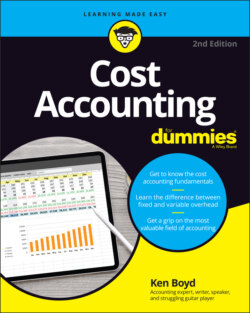Читать книгу Cost Accounting For Dummies - Kenneth W. Boyd - Страница 21
Controlling your costs
ОглавлениеCost accounting helps you stay on top of your costs — and make changes along the way. You should analyze costs frequently. Most companies perform this analysis on at least a monthly basis … and sometimes weekly or even daily. The more specific you make your analysis, the better. As always, the benefits you gain from your analysis should outweigh the costs.
If you analyze costs frequently, you find areas where you can reduce costs immediately. There’s nothing worse than discovering a problem after it’s too late to fix, so don’t create a budget and shove it in a drawer. Review your actual results, and compare those results to your budget. If you find large differences, dig deeper. Consider reviewing more detail to find out what caused the difference.
Here are some tools you can use to control costs. Each tool is explained in detail in this book:
Cost-volume profit (CVP) analysis: CVP is a simple tool to analyze costs, sale price, and units sold. There’s a user-friendly formula — the kind of tool you can play around with on a notepad or spreadsheet. Check out Chapter 3 for more on CVP.
Variance analysis: A variance is the difference between your planned costs and actual costs. A large variance is a red flag — a number that gets your attention. You investigate variances to find ways to reduce your costs. Chapter 7 tells you more.
Activity-based costing (ABC): This analysis allows you to assign costs using the activities put into making your product or service. ABC assigns costs to products based on levels of activity: labor hours incurred, machine hours used, and so forth. See Chapter 5 for an in-depth look.
Support costs: Nearly every business incurs support costs. These are areas of your business that support your production and sales efforts. Accounting and legal costs are good examples of support costs.
Joint costing: Your business may use the same process to produce several different products. This situation is called joint production. The products will share common costs of this production, or joint costs. Now, it’s likely that each product has its own unique costs after joint production; however, you need a tool to allocate the joint costs when the products are produced together.
